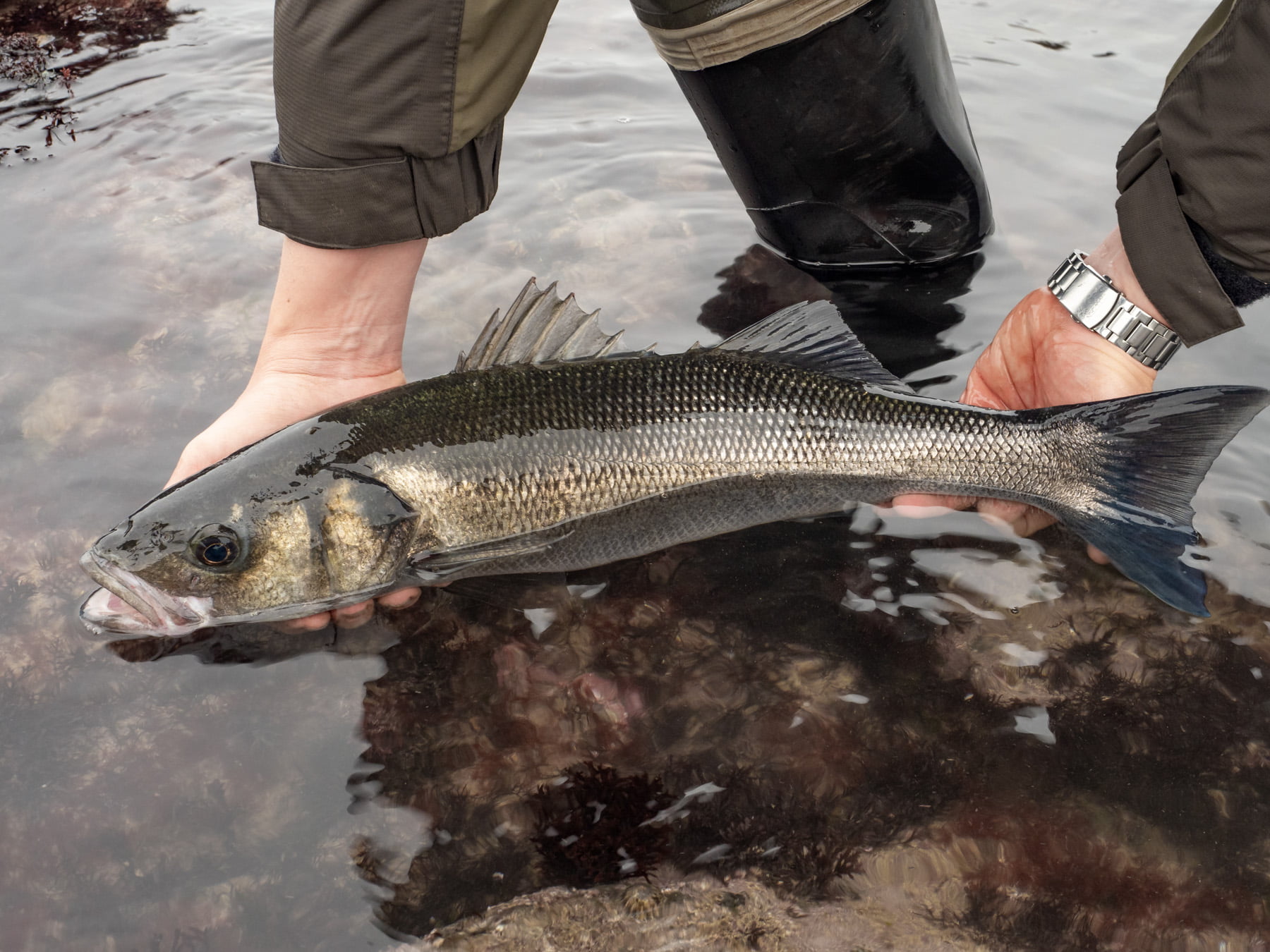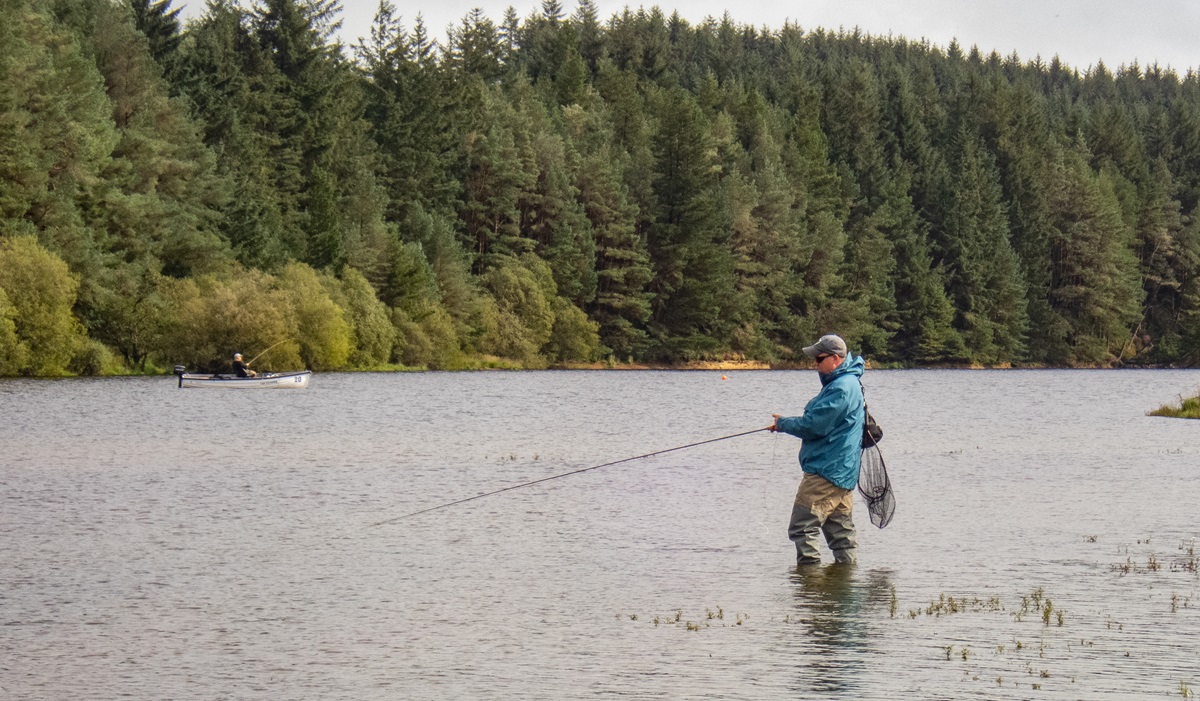Late Autumn Bass Fishing – The Forgotten Months
It is a well kept secret that bass fishing in Wales is often at its best in the late autumn. Here Alan Parfitt talks about the excellent bass fishing in Wales in the ‘off peak’ months.
In the late 1960’s I borrowed a book from the local library subsequently played a huge role in sending me on a life long angling pursuit of Welsh Sea Bass (Draenog y Mor) The book was entitled “A Tide of Fish” written by the much missed Welsh angling writer Clive Gammon.
Published in 1962 the book describes the early years of Bass fishing in South West Wales, particularly the Castle Martin peninsula and Gower. It remains even today as one of the best sea fishing books ever written.
South West Wales has to be a spiritual home of surf fishing, for Bass as here it was first fully developed and described to soon become more widely established in other region of southern Britain and Ireland.
Unfortunately, the magnificent catches of good sized Bass as described in “A Tide of Fish” taken from the legendary classic storm beaches of Newgale, Freshwater west, Broad Haven and Marloes together with many more smaller locations could not last. However, bass in Wales are still well worth fishing for, and are on the increase once again thanks to new protective regulations.
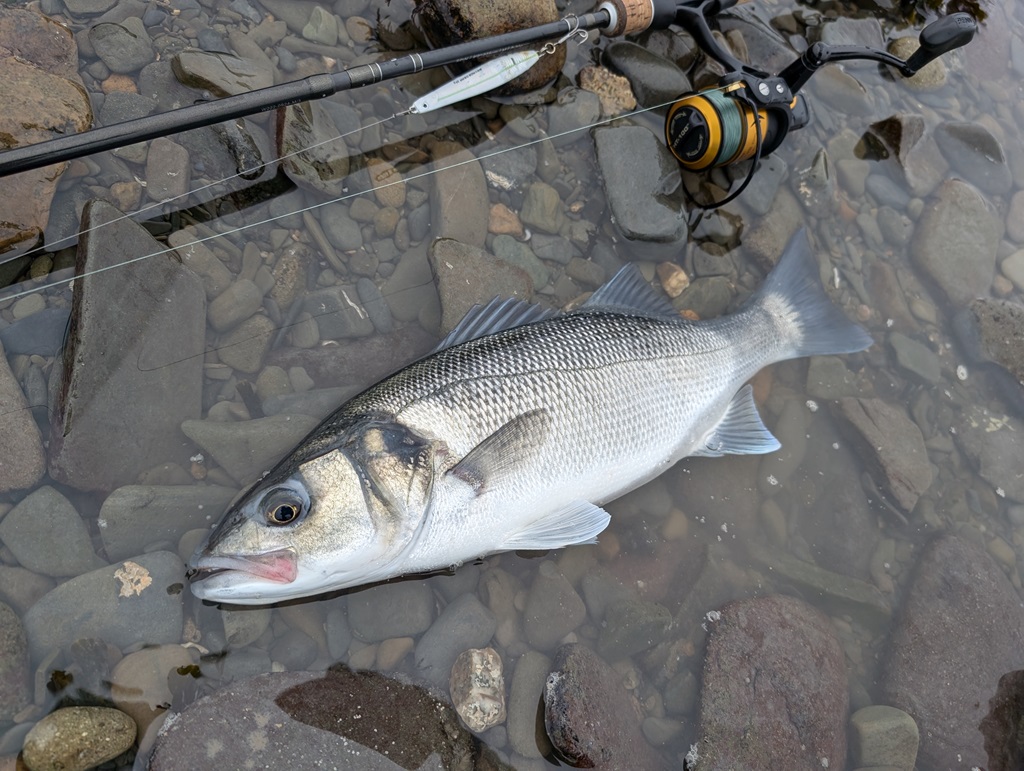
Today we have a much greater knowledge of Bass biology and habits so we now know that a major reason for this past decline stems from the fact that Bass can be quite localised in their locations during the summer months and when fish are removed they are not replaced quickly by new arrivals. A good example is a fish caught several years ago as part of a “Bass Anglers sport fishing society” tagging scheme. “Billy” as he became known was captured for 3 successive years at the same location and time each year. It seems adult Bass return to the same location for the summer months though they do travel large distances on migration.
In fact a bass I tagged in November in Pembrokeshire was caught in Morecombe bay the following August. A second reason is the extremely slow growth rate of Bass, so when the larger fish are removed it can take many years to replace them. There are still good Bass to be caught surf fishing and the general size is now improving each year.
The Sea Bass is regarded by biologists as a warmer water fish and the UK was once regarded as the northwards limit of their range being largely restricted to the south west of Wales, the English channel, West country and southern Ireland. As you moved northwards they became less common and Anglesey was once generally regarded as about their northern most limit.
As we know the climate is changing, however, and with warmer waters their range has progressively moved northwards to the extent that a few are now being caught as far north as Orkney and into the North Sea.
In winter adult Bass move south westwards to the south western approaches to overwinter and return to the UK waters in the spring though in a very mild winter the fish would remain closer to the coastline. In south west Wales with its mild climate smaller school Bass remain present all through the winter with each large storm beach possessing its own resident population.
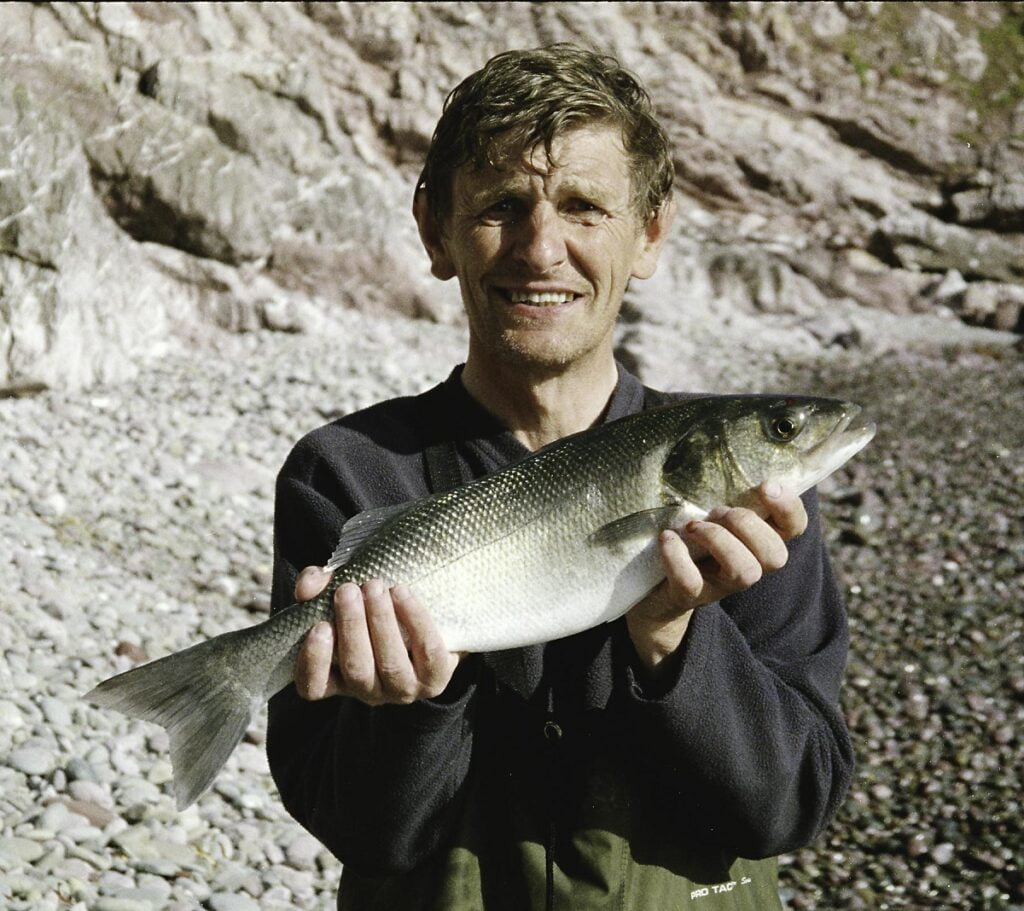
Traditionally, the Bass season started around late May and continued until October. The late Clive Gammon insisted that the key to the arrival of Bass in numbers was water temperature. He considered 10C. to be the threshold for the arrival of Bass in the Spring.
It is important to remember that water has a high specific heat capacity. This means it takes large amounts of energy to warm water even a small amount while it also takes an equally long time for it to cool. A few warm days in Spring may feel very pleasant to us it will have negligible effect on raising the sea water temperature. The consequence of this bit of Physics is that sea temperatures around the UK are at their coldest in March/April and at their warmest in August. In October/ November even though air temperatures are rapidly cooling the sea remains warmer than it is even in June.
In South west Wales the sea remains even warmer due to its location close to the warming Gulf stream. This phenomenon has real implications for the keen Bass fisherman. I regard October through November to provide the best Bass fishing of the year, a time when many anglers have already packed away their gear for the winter.
There are a few big Bass inshore in late spring, probably hunting crabs which are highly vulnerable as they peel at this time of year, but good numbers of Bass do not appear until the water starts to warm up in late May to June. Unfortunately, the summer months can then be disappointing as the bigger Bass seem to disappear, probably moving off shore to feed on baitfish so the fishing can be can be quite disappointing for the shore Bass angler.

So, why late October into November? Well both myself and better Bass fishermen than I have discovered that large Bass can seem to appear out of nowhere at this time of year. At shore marks, which are often devoid of fish in high summer, large Bass can suddenly appear and if you are fortunate enough to discover such a mark and fish it on the right day then the sport can be truly memorable.
At one small location, which I’m afraid has to remain known to just a few, once yielded around 15 to 20 Bass all 5lb plus in a single session caught on lures in November. Why they appear is a mystery to me, but I have found that Kelp beds at low water can be very productive and I can only speculate that perhaps the Bass are feeding on small baitfish hiding there or simply resting up during the low water period.

The best way to tackle such marks is by lure fishing. All sorts of lures can work well, particularly surface attractors, which certainly makes fishing easier in weed filled locations. Very importantly the angler needs to be prepared to wander large distances along the shore and continually try new areas. If you don’t get a fish in 10 minutes or so at a particular spot while lure fishing move on as there are probably no fish there. Just keep in the back of your mind BASS are EASY to catch but HARD to FIND.
Usually rocky shallow areas particularly those with coves and gullies uncovered at low water are worth exploring. I am very fond of coves which fill at high water. Maybe they act as a restrictive trap for small baitfish which the Bass can then move in to attack. The only downside of late October through November lure fishing for Bass is that some years we get very stormy weather, which can reduce water clarity even in Pembrokeshire. I like to be able to see at least a couple of feet into the water to feel confident.
The alternative is of course to fish with bait and at the same locations as for lure fishing. Dirty water certainly helps day time fishing with bait as the Bass seem far less wary.
Daytime fishing in the surf is mostly a waste of time in Pembrokeshire but improves enormously once it gets dark. This provides another huge advantage of Autumn surf fishing in that it gets dark by early evening so you can have good session without having to travel home in the early hours of the morning.
Words & Images: Alan Parfitt
Find places to go bass fishing in Wales here.

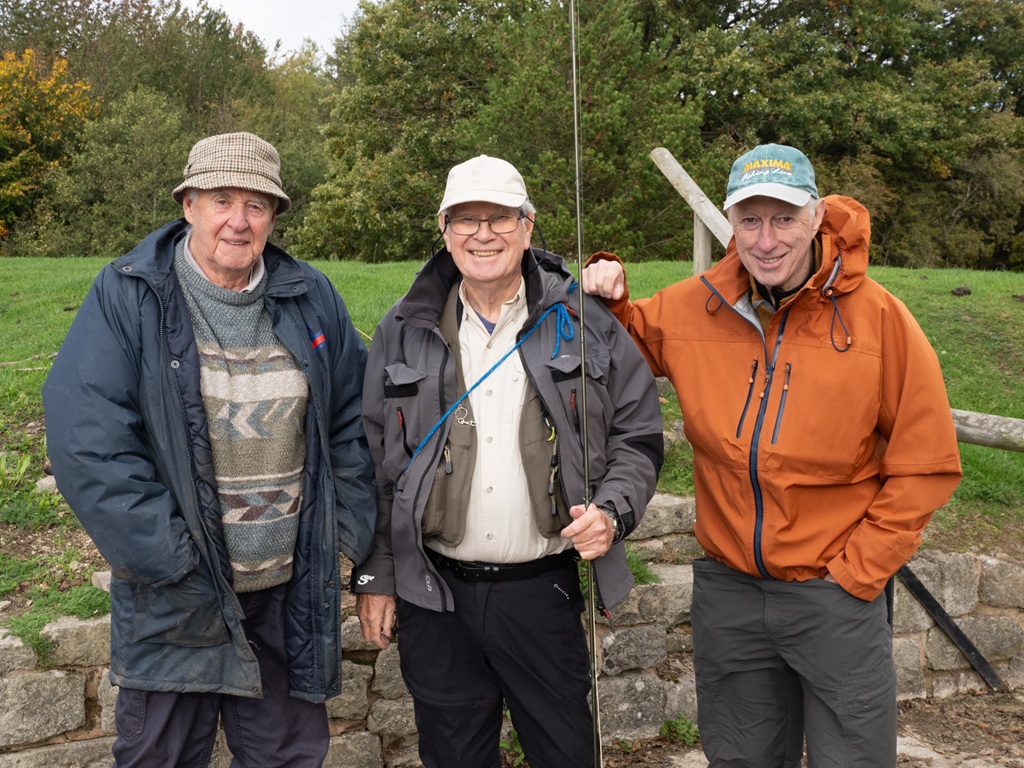
Take a Friend Fishing is Back! Take someone you know fishing for FREE this Christmas and New Year
Calling all Anglers – Take someone you know fishing for FREE between Saturday 20th December 2025 and Sunday 4th of…
Read More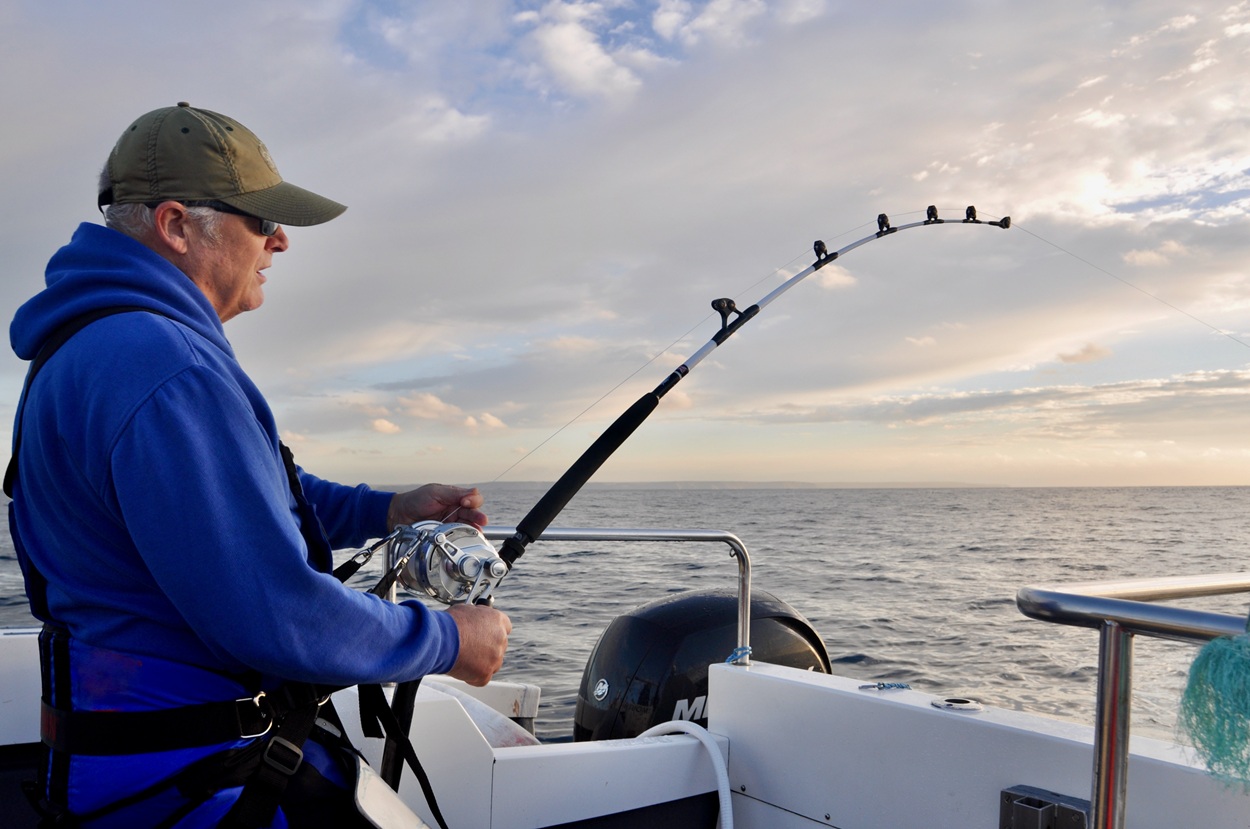
Tuna Sport Fishing Wales
Dave Lewis reports on the emergence of a rod and line tuna fishery off Welsh coasts; a huge draw for…
Read More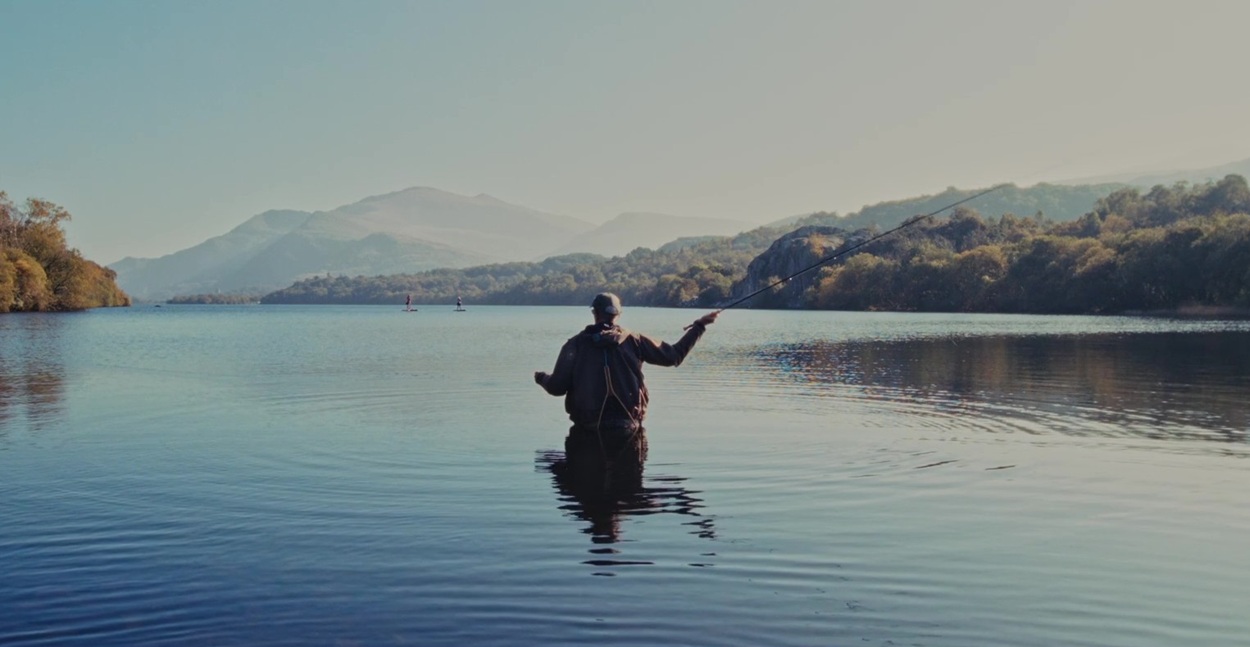
Am ein bywydau 'About our lives' - Cymdeithas Pysgota Seiont Gwyrfai & Llyfni VIDEO
A Welsh language film (Cymraeg) with English subtitles. We’re pleased to present: Am ein bywydau – a film…
Read More
